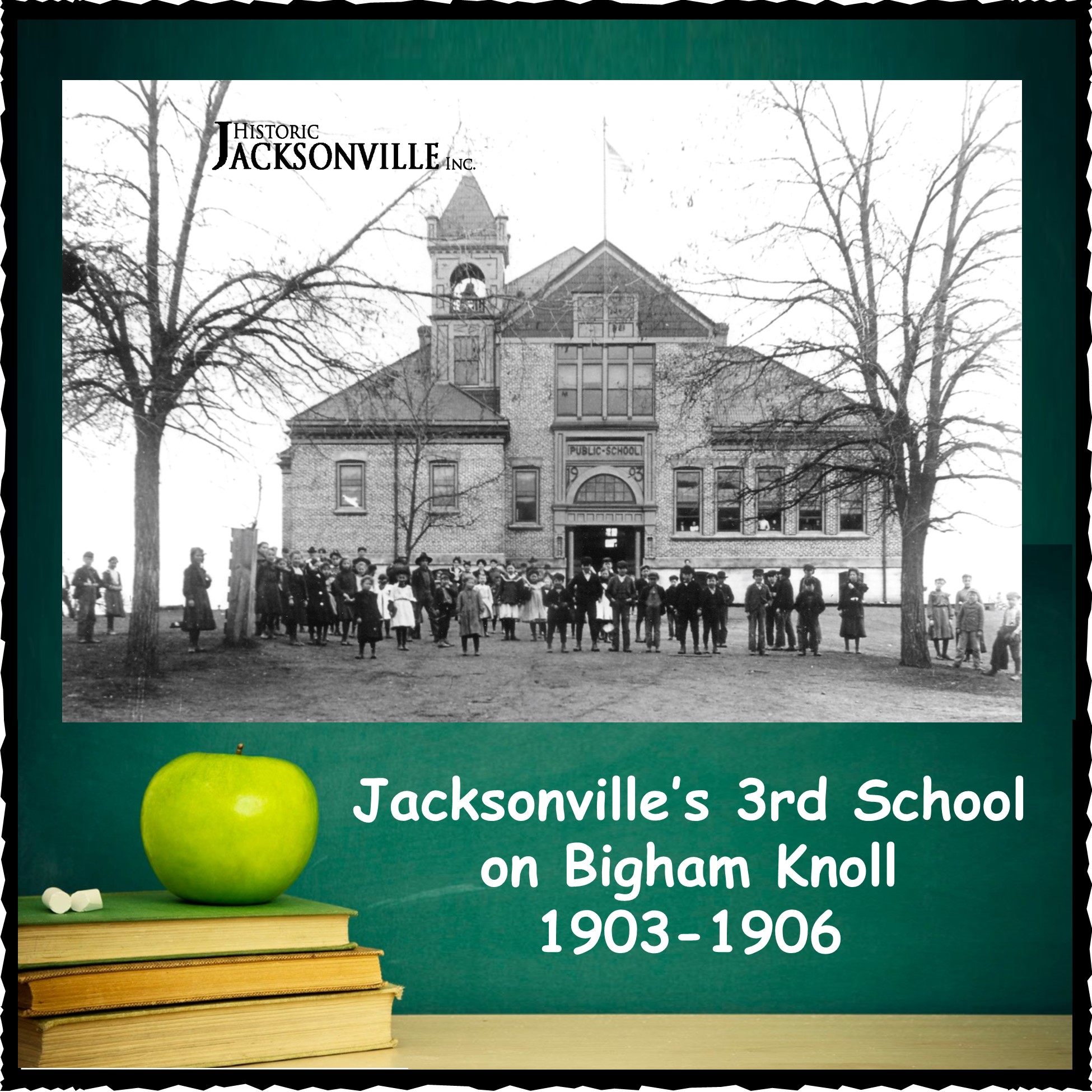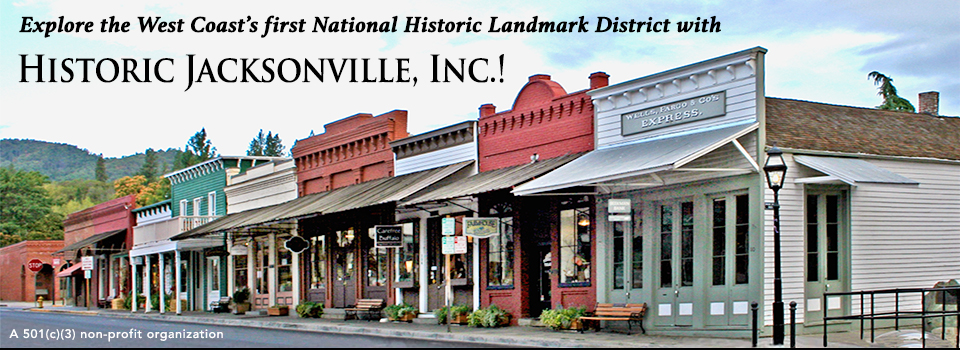It’s History Trivia Tuesday!
Historic Jacksonville shares tidbits from Jacksonville history every Tuesday on our Facebook and Instagram pages. “Like” us on Facebook at Historic Jacksonville (historicjville) or “follow” us on Instagram (historicjacksonville) and enjoy our tales and stories of the people and places that made Jacksonville the major hub of southern Oregon in the late 1800s. And visit the Southern Oregon Historical Society Library and Archives for access to the historical images included in our posts.

It’s History Trivia Tuesday! With Jacksonville students being back in school, Historic Jacksonville, Inc. is revisiting some of the structures that have served as school buildings for the town’s youth over the years. When a December 1906 fire razed the 3rd school to stand on Bigham Knoll, Jacksonville voters immediately approved another school bond issue.
The new fireproof brick building, completed in 1908, was acclaimed one of the best appointed schoolhouses in the state with 6 classrooms, a large assembly room with a large stage fitted with electric footlights, and a steam heating plant. A large gymnasium building, additional classrooms, and other outbuildings were added between 1924 and 1953.
But by the 1950s the structure had safety issues, and in 1959 the high school was closed, and the second floor of the building blocked off. One year later, the cupola and bell tower were removed. After a new elementary school was constructed in 1983, private schools occupied this structure through 2007 when the property was acquired by the Ashland family for their corporate headquarters. They restored the buildings, recycling original materials and reintroducing many of the distinctive features of the 1908 school. Now, the school houses a restaurant, events, classes, and more—a site and building that continues to reinvent itself!
